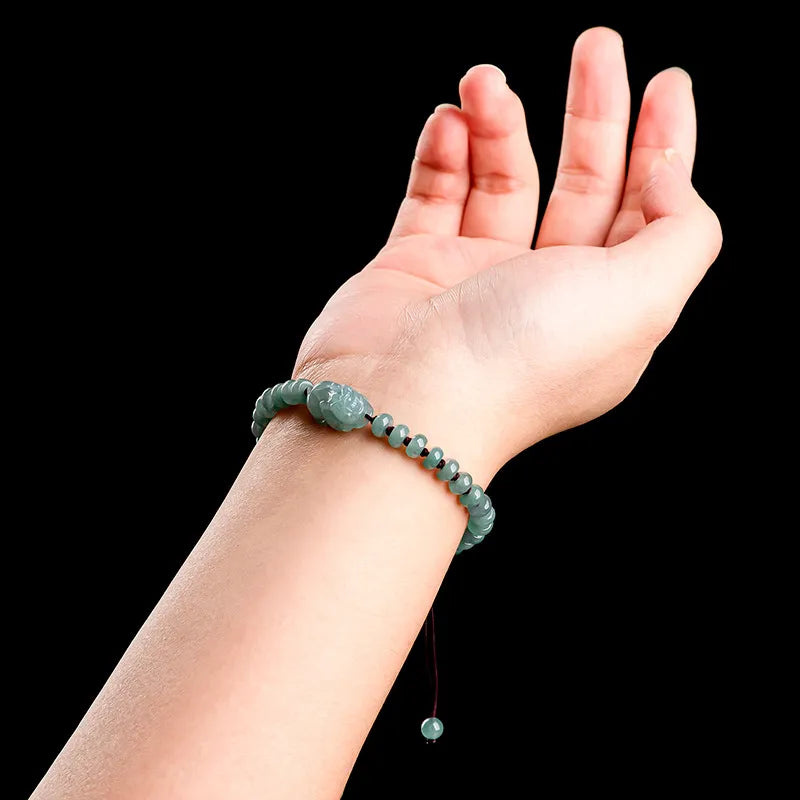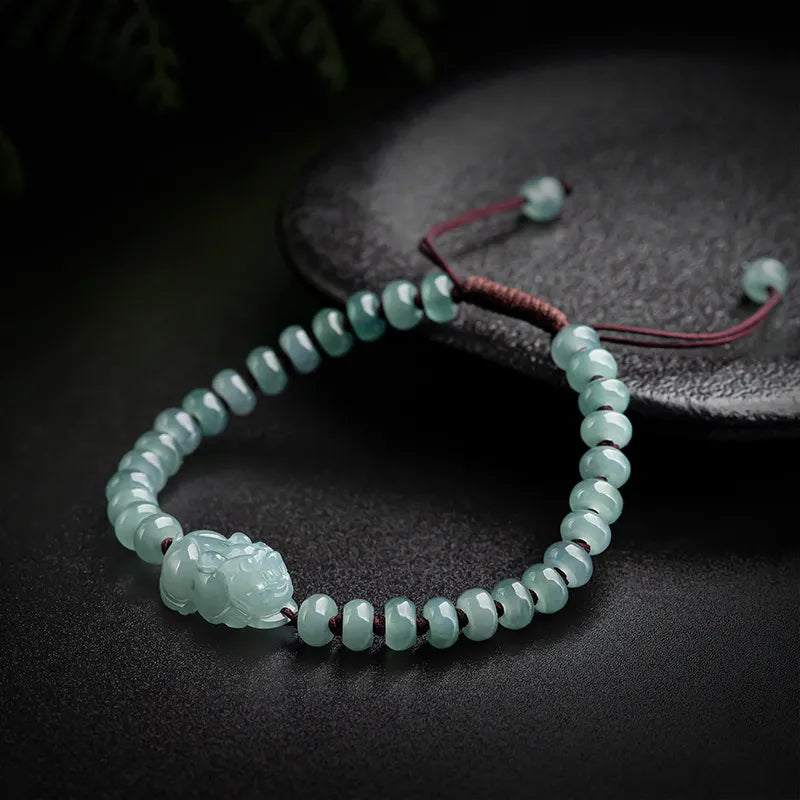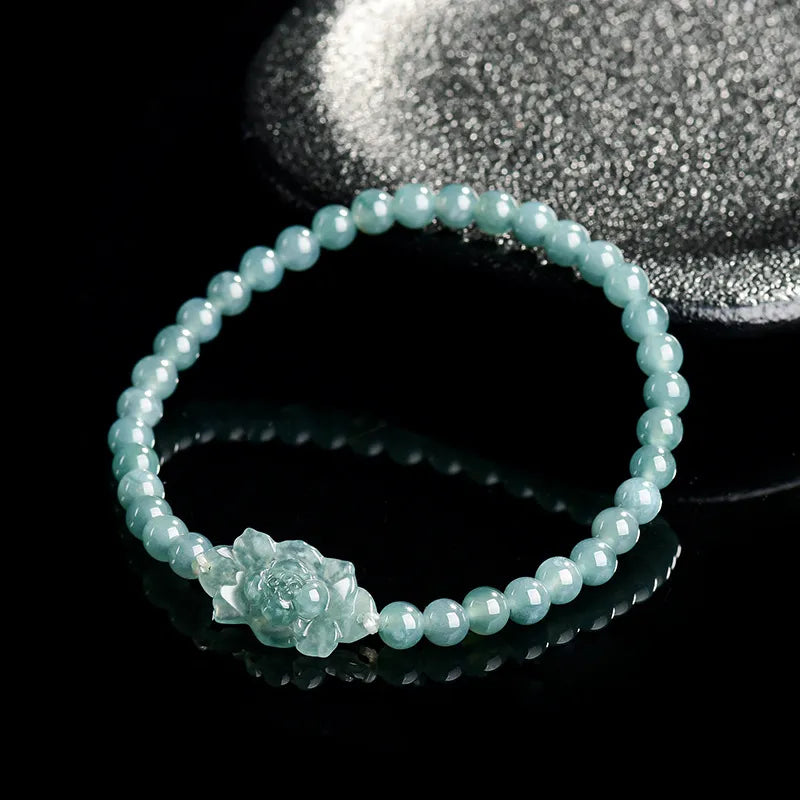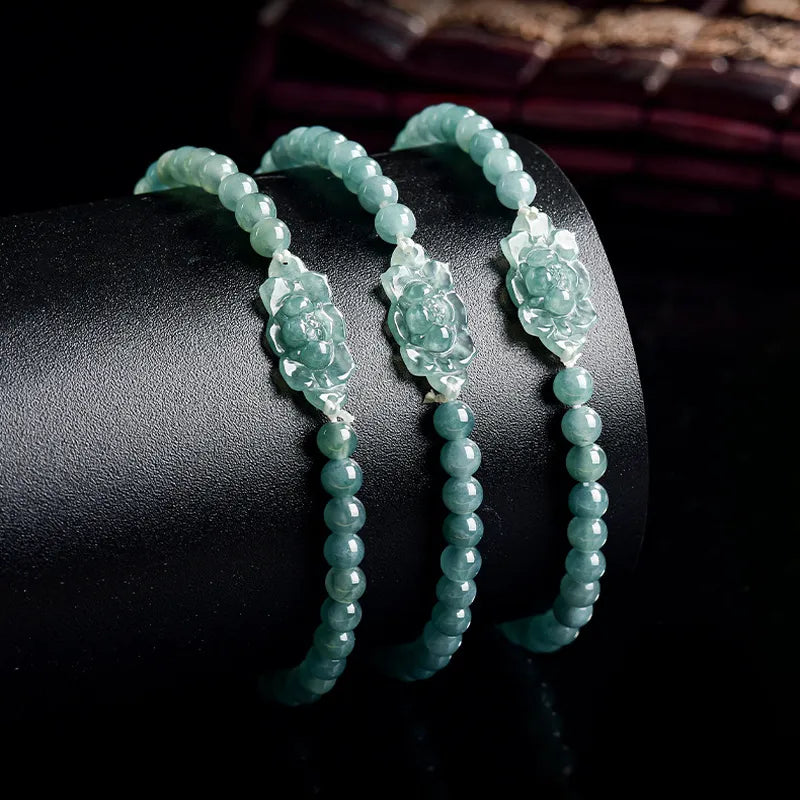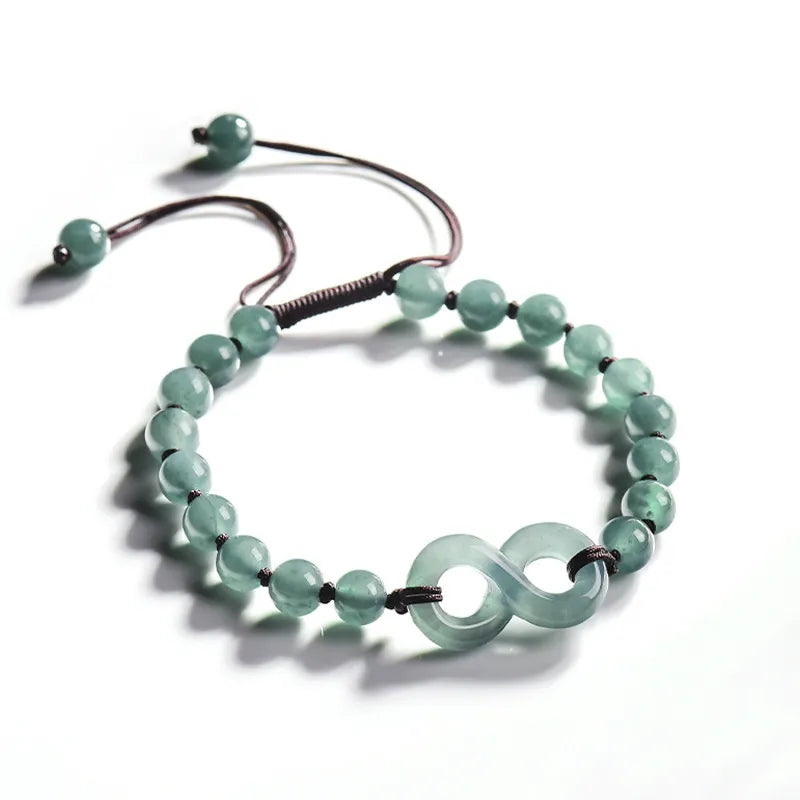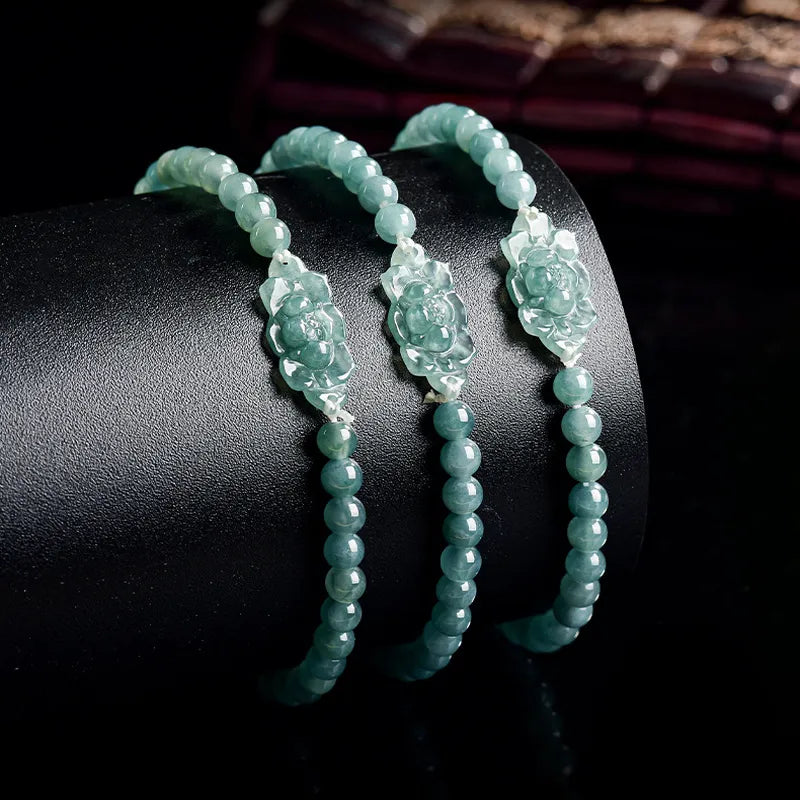How to Choose the Right Width for Jade Bangle Bracelets: A Detailed Guide
Selecting the appropriate width (commonly referred to as "条径粗细" or "strip thickness") for a jade bangle involves balancing aesthetic preferences, comfort, and structural durability. Unlike rigid metals, jade’s brittleness and unique texture require careful consideration of how width impacts wearability and visual appeal. Below, we explore the key factors influencing width selection.

1. Wrist Size and Proportional Harmony
The width of a jade bangle should complement the wearer’s wrist dimensions to avoid visual imbalance or discomfort.
- Slender Wrists: Individuals with narrow wrists (circumference below 150mm) often suit narrower bangles (5–8mm wide). Wider options (over 10mm) may overwhelm delicate wrists, creating a "top-heavy" appearance.
- Average to Full Wrists: Wrists measuring 150–170mm can accommodate medium widths (8–12mm), which strike a balance between prominence and subtlety.
- Large Wrists: For wrists exceeding 170mm, wider bangles (12–15mm) enhance proportional harmony. Thin strips may look insubstantial on broader wrists.
Visual Tip: Hold the bangle against your wrist in natural light. The edges should align with or slightly exceed the wrist’s visible width without extending beyond the forearm’s natural taper.
2. Daily Comfort and Movement Flexibility
Width directly affects how a bangle interacts with the wrist during daily activities.
- Narrow Bangles (5–8mm): Lightweight and flexible, these are ideal for active lifestyles. They slide easily under clothing and cause minimal interference during tasks like typing or exercising.
- Medium Bangles (8–12mm): Offer a noticeable presence without restricting movement. Suitable for office work or casual outings, they provide a moderate weight that feels substantial but not cumbersome.
- Wide Bangles (12–15mm): Best for static wear or formal occasions. Their weight and bulk may cause discomfort during prolonged typing, writing, or physical labor.
Activity Check: If you frequently use your hands for repetitive motions (e.g., cooking, gardening), prioritize narrower widths to avoid irritation or accidental impacts.
3. Aesthetic Preferences and Style Context
Width plays a critical role in defining the bangle’s visual impact and suitability for different occasions.
- Understated Elegance: Narrow bangles (5–8mm) exude a minimalist charm, pairing well with professional attire or layered jewelry. Their subtlety makes them versatile for daily wear.
- Bold Statement: Wide bangles (12–15mm) serve as focal points, ideal for cultural ceremonies, evening events, or standalone accessories. Their prominence complements monochromatic outfits or simple silhouettes.
- Cultural Traditions: In some Asian cultures, wider bangles symbolize prosperity or status. Historical designs often feature thick strips (10–18mm) with intricate carvings, reflecting craftsmanship and heritage.
Layering Note: If combining multiple bangles, opt for varying widths (e.g., one 12mm bangle paired with two 6mm bangles) to create depth without clutter.
4. Jade Material and Structural Integrity
The natural properties of jade influence how width affects durability and craftsmanship.
- Nephrite vs. Jadeite: Nephrite, being slightly tougher, can support thinner widths (down to 4mm) without high fracture risk. Jadeite, while more translucent, requires thicker profiles (minimum 6mm) for structural stability.
- Carving Complexity: Intricate designs (e.g., relief carvings, openwork) demand thicker widths (10–15mm) to prevent breakage during shaping. Simple, polished bangles can be thinner (5–8mm).
- Color Consistency: Wider bangles showcase color variations more prominently. If the jade has subtle veining or patches, a medium width (8–12mm) balances visibility and uniformity.
Craftsmanship Insight: Thin bangles (below 5mm) are rare and often reserved for high-grade jade with minimal flaws, as even small imperfections can compromise strength.
5. Personal Health and Sensitivity Factors
Wrist health and skin sensitivity may dictate optimal width choices.
- Arthritis or Joint Pain: Narrower bangles (5–8mm) reduce pressure on inflamed joints. Wide, heavy bangles may exacerbate discomfort during flare-ups.
- Skin Allergies: Thicker bangles (12–15mm) with smooth, polished interiors are less likely to trap moisture or irritants compared to narrow, textured designs.
- Temperature Sensitivity: Jade retains cold temperatures longer than metals. Those sensitive to cold may prefer medium widths (8–12mm), which balance thermal conductivity and coverage.
Medical Advice: Consult a healthcare provider if you have chronic wrist conditions. Some may recommend avoiding wide bangles entirely during recovery periods.
6. Practical Testing for Ideal Width
At-home methods help determine the most comfortable and visually appealing width.
- Paper Strip Test: Cut a paper strip matching the bangle’s intended width. Wrap it around your wrist to gauge how it feels during movement.
- Mock-Up Comparison: Use a thick rubber band or fabric strip in varying widths (e.g., 5mm, 10mm, 15mm) to simulate wear. Note which width stays securely in place without shifting.
- Lighting Assessment: View the bangle under different lighting conditions. Narrow widths may disappear in low light, while wide bands retain visibility.
Final Tip: Start with a medium width (8–10mm) if unsure. This range offers flexibility for most wrist sizes and occasions, serving as a safe starting point before customizing further.
Long-Term Considerations
A jade bangle’s width should evolve with your lifestyle and aesthetic preferences. Active individuals may prefer narrower options for daily wear, reserving wider bangles for special events. Similarly, those prioritizing cultural significance might opt for traditional thick designs. Regularly assess comfort and visual appeal, as changes in weight, health, or style may necessitate adjustments.
